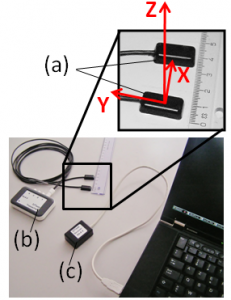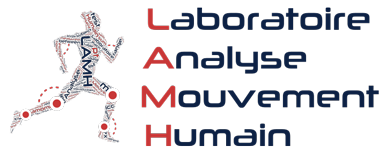Ambulatory sensors for the analysis of pathological human gait
Investigators: M. Boutaayamou (LAMH-Montefiore), C. Schwartz (LAMH), V. Denoël (LAMH-ArGEnCo), O. Brüls (LAMH-Aérospatiale & Mécanique), G. Garraux (Sciences cliniques, Neurologie), J. Verly (Montefiore)
Parkinson’s disease (PD) has a lifetime risk of 2%, making it the second most common neurodegenerative disease after Alzheimer’s disease. A main risk factor for PD is aging and current demographic trends predict a doubling in the number of cases by 2050. Gait disturbances are a leading cause of mobility disability in PD and remain a major therapeutic challenge.
To date there are no validated clinical instruments or device that allows a full characterization of neither gait disturbances in PD nor their change over the disease course. In fact, rather than dividing patients with or without gait disturbances, gait in PD may be best portrayed by quantitative gait analyses using inertial sensors that would allow scoring patients along a continuous spectrum of gait severity.
In a first step toward that goal, the MoVeRE research group at ULg in collaboration with the TELE lab at UCL has designed an original low-cost accelerometer system. The software and signal processing algorithms are developed by the LAMH and in collaboration with Prof. Jacques Verly (Institut Montéfiore) in order to enable the assessment of quantitative gait features in a clinical setting. The validation of these features is examined using the 3D optoelectronic system and ground reaction force plates available in the LAMH. This system is also used in combination with others instruments available at the Cyclotron Research Center to better understand the neural mechanisms underlying the wide spectrum of gait disturbances in PD. Potential applications of the models developed in this project are the development of innovative preventive and/or rehabilitation strategies of gait disturbances in PD, brain-computer interfaces and robotics.
Gait Analysis and Brain Imagery to predict (cognitive and) functional decline in older adults
Investigators: S. Gillain (CHU, gériatrie), J. Petermans (Sciences cliniques, gériatrie), G. Garraux (Sciences cliniques, Neurologie), E. Salmon (Sciences cliniques, neuroimagerie), C. Schwartz (LAMH), O. Brüls (LAMH-Aérospatiale et Mécanique).
Recently, the scientific literature has shown that leukoaraiosis and gait parameters are relevant to better identify eldery adults at risk of functional decline including falls and cognitive decline. The aim of this work is to evaluate the interest of gait parameters when they are integrated in a comprehensive geriatric assessment including a brain MRI. One hundred to one hundred and twenty people will include and benefit to the complete assessment at T0. They will be followed by an every three month phone call and/or in geriatric consultation. Main outcomes are the fall and the cognitive decline. The secondary outcomes are the functional decline, hospitalization and death. At the end of this study, predicting variables will be included in a predictive tool to help the clinician better discerning old people needing more help, medical services and/ or rehabilitation.




